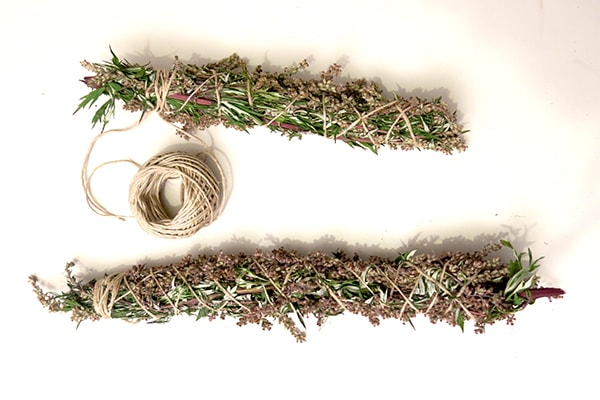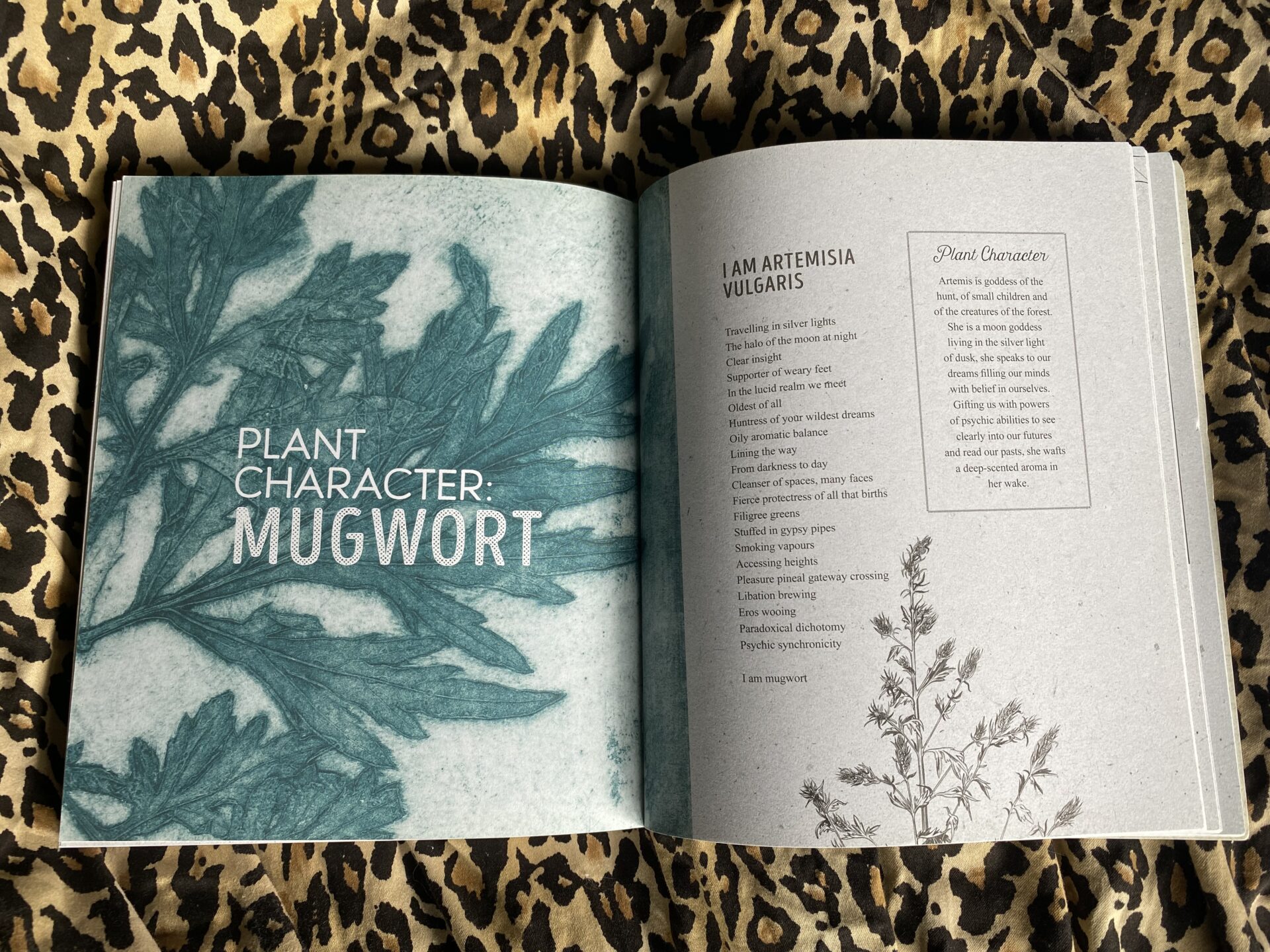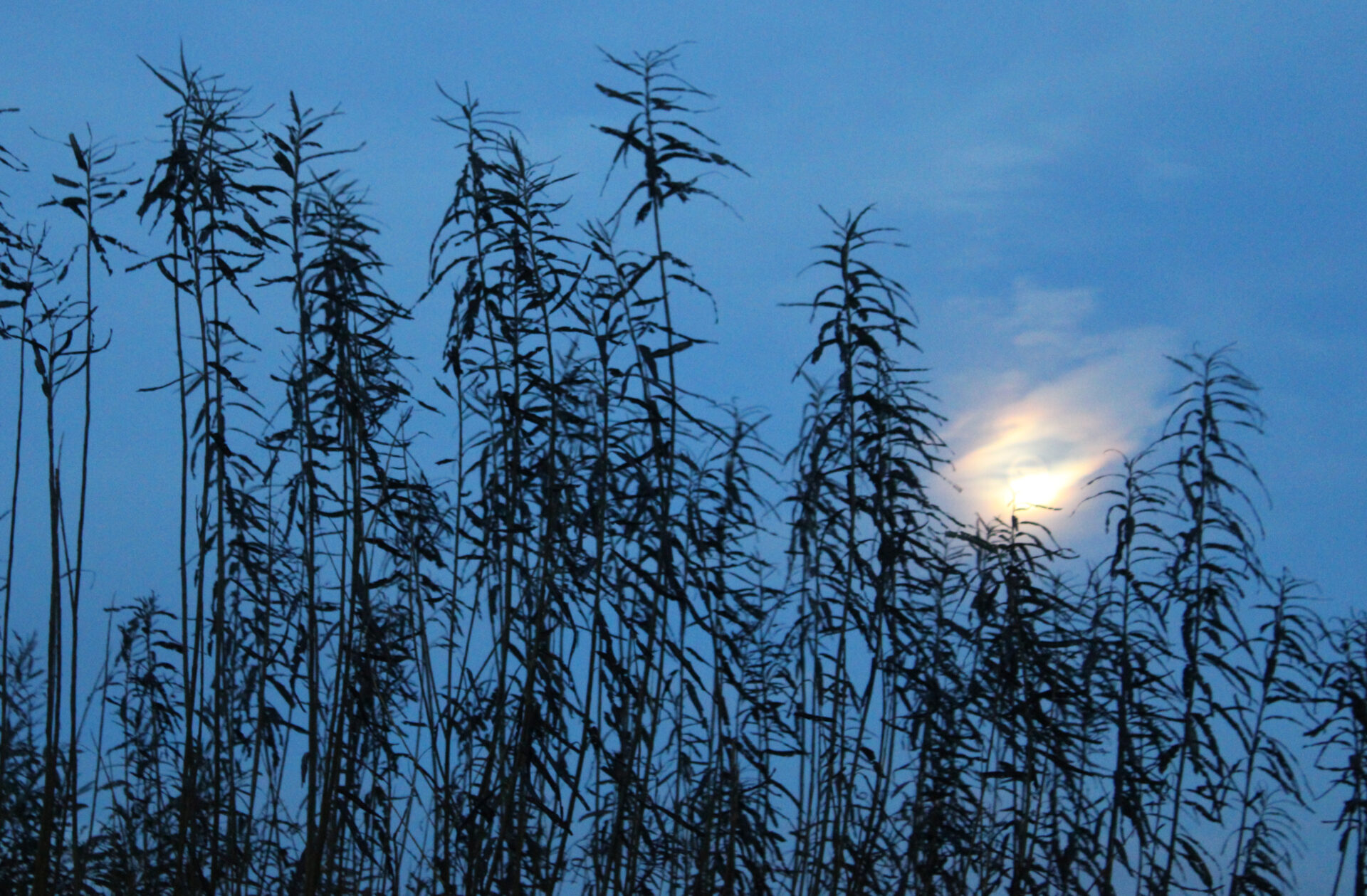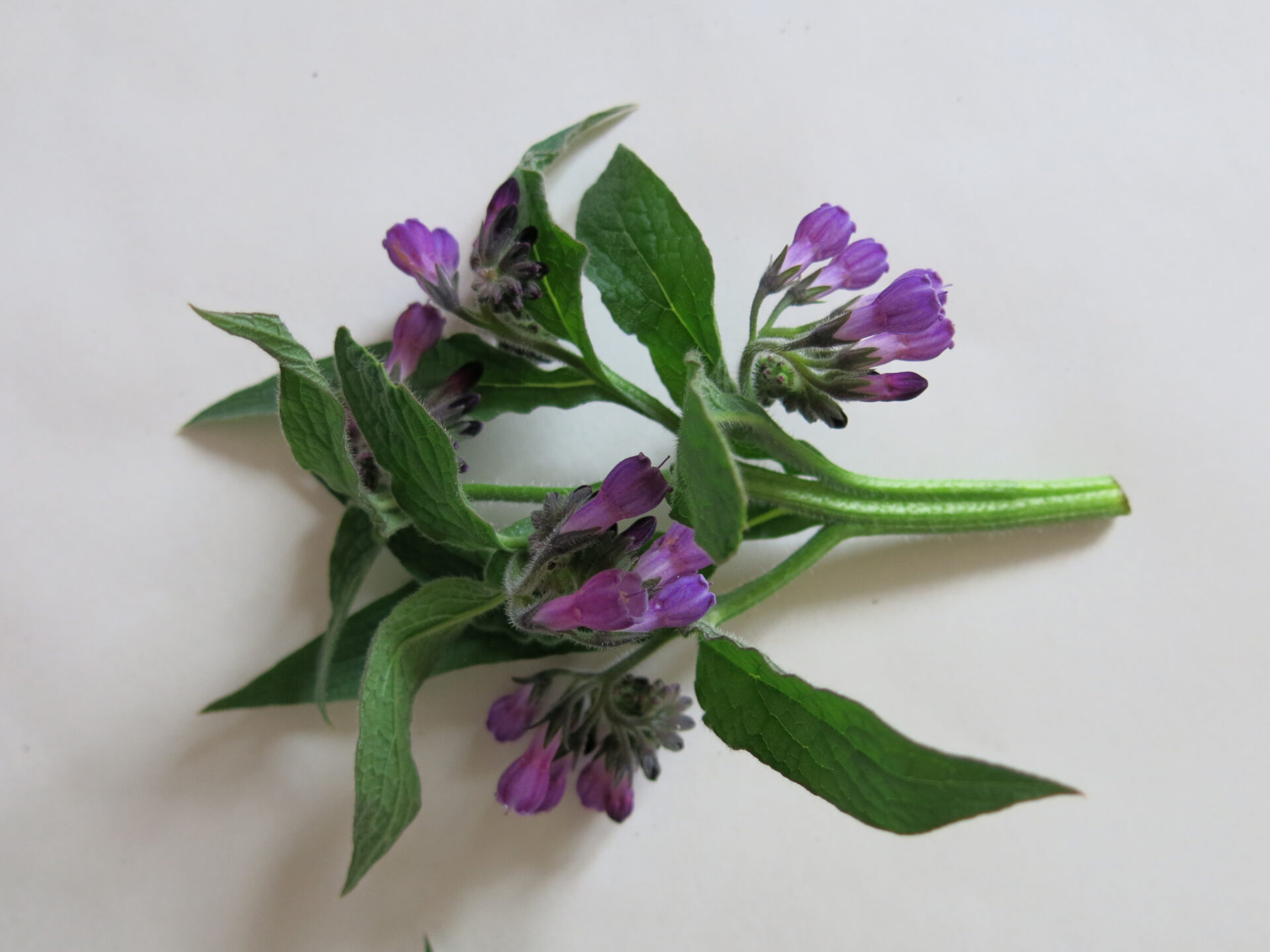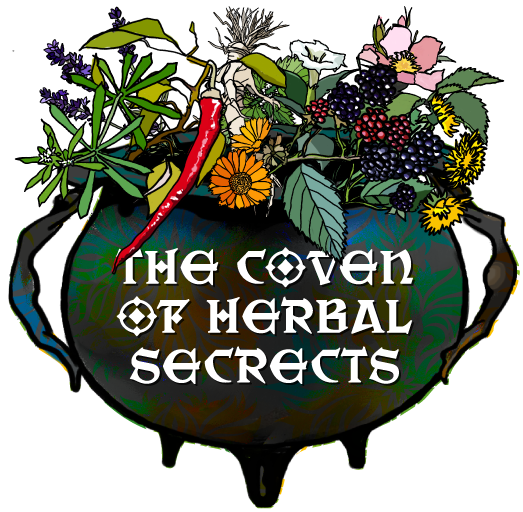Mugwort is said to have derived its name from being used to flavour drinks. It was, in common with other herbs such as Ground Ivy, used for flavouring beer before the introduction of hops. For this purpose, the plant was gathered when in flower and dried. Malt liquor was then boiled with it so as to form a strong decoction, and the liquid thus prepared was added to the beer.
It has also been suggested that the name, Mugwort, may be derived not from ‘mug,’ the drinking vessel, but from moughte (a moth or maggot), because from the days of Dioscorides, the plant has been regarded, in common with Wormwood, as useful in keeping off the attacks of moths.
Also known as waremodh (“aware-mood”). It was the primary herb in the Nine Herbs Charm, an Anglo-Saxon incantation recorded in the 10th century Lacnunga:
The Nine Herbs Charm
In modern English
Remember, Mugwort, what you made known,
What you arranged at the Great proclamation.
You were called Una, the oldest of herbs,
you have power against three and against thirty,
you have power against poison and against infection,
you have power against the loathsome foe roving through the land.
Mugwort has a long history of use in herbal medicine, especially in matters connected to the digestive system, nervous system, menstrual complaints and the treatment of worms. All parts of the plant are healing and some of the actions that are ascribed the plant are anthelmintic, (worming) antiseptic, antispasmodic, carminative, cholagogue (improving the production of bile), diaphoretic (makes you sweat), digestive, emmenagogue (brings on a period), expectorant, nervine, and stimulant.
The leaves have been shown in clinical trials to have an antibacterial action, inhibiting the growth of Staphylococcus aureus, Bacillus typhi, B. dysenteriae, streptococci, E. coli, B. subtilis, Pseudomonas etc.
The Dreaming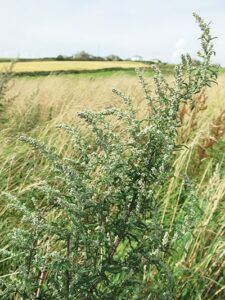
Mugwort has been known and documented for ages as a reliable dream enhancing plant. In the West, mugwort was historically associated with the Greek goddess Artemis, the Moon Goddess. Perhaps because it stimulates blood circulation, and was used chiefly to aid painful and irregular menstruation and also aid birthing. Artemis is the Greek Goddess who was famed for sending divine dreams. I recommend picking fresh mugwort with the moon, best on a full moon harvesting consciously and ritualistically then placing it close to the bed, or even under your pillow. Also, try burning some mugwort as incense, which can make bedtime into a ritual that will support more dream remembrance.
The pineal gland has been likened to the seat of consciousness. It becomes active when we are in deep rapid eye movement sleep, creating our dream world. The release of melatonin at night balances out the sleep wake cycle and keeps us balanced, connected with the cycles of day and night. Mugwort can stimulate pineal gland activity thus bringing our dreams alive.
Making Smudge Sticks
There is nothing more powerful than using sacred tools you’ve made yourself and smudge sticks are no exception. You can put all of your energy and thought into the herbs as you harvest them, the tying of the twine around them and then the drying and burning at the end. While you are harvesting and making the smudge sticks, remember to use your intention – think uplifting purification and protection.
1. First you need to harvest your herbs. We use mugwort as our base. She is abundant and really keeps the smudge stick alight with the way she burns. Find a good, healthy and abundantly growing patch. Harvest just as the plant has flowered, which is around mid June-Mid July. Mugwort is connected to the moon, so it is nice to harvest when the moon is full. The moon draws up all of the plant’s energy and constituents to the tips. Depending on the size of the plant you have chosen, we usually harvest from about half way down the stem, above where she looks like she could divide off and keep growing if the weathers right. You will need the pieces to be at least 30-40cm long to make nice fat smudge sticks.
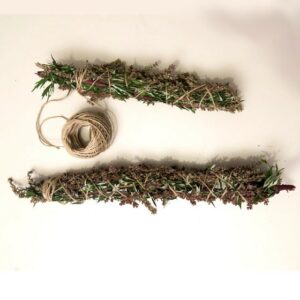 2. Next, choose what you want to go in with the mugwort. We usually head to the garden for this. Yarrow, sage and rosemary are our favourites, but we’ve also used wormwood and white sage, when we’re making smudge sticks. The aromatic herbs burn well because they are high in essential oils, which are the plants own defense system. The oils burn with lovely aromas and provide the same protection that they did for the plant.
2. Next, choose what you want to go in with the mugwort. We usually head to the garden for this. Yarrow, sage and rosemary are our favourites, but we’ve also used wormwood and white sage, when we’re making smudge sticks. The aromatic herbs burn well because they are high in essential oils, which are the plants own defense system. The oils burn with lovely aromas and provide the same protection that they did for the plant.
3. Lay a good bunch of a combination of your herbs, but mainly mugwort, out in front of you. The thickness depends on your own choice and the weird and wonderful shapes of the finished products often reflect the character of the person who made it! It probably wants to be a bunch about the thickness of your thumb and first finger when they join at the tip to make a circle.
4. Match up the stems approximately, but you can trim them afterwards and then holding the base of the bunch in one hand slightly twist the bunch with the other and fold it in half, so that the ends of the bunch come back down to where your first hand is holding the bunch.
5. Now place some twine (green garden twine is nice or you can use nice coloured embroidery threads) around the end and bind a couple of times around before starting to work up towards the end being careful to include all the ends of herbs as you go. It needs to be bound tightly as the herbs will shrink as they dry, but air also needs to pass through the spiral of thread going up the bunch to make sure that it can dry properly. Work up and then back down winding the thread around, so that as the thread burns away it still crisscrosses to stop it from unraveling before you reach the end of your smudge stick.
6. Do a few nice tight rounds at the bottom before tying it tightly with the loose end. Set your intention clearly with each knot as you tie it.
7. Hang your smudge stick in a warm, dry place. Near a wood burner or in an airing cupboard is best, giving it a feel periodically to check it is dry. The length of time taken to dry will vary depending on how thick and tightly you’ve made and tied your bunch and on where you hang it.
Using the smudge stick
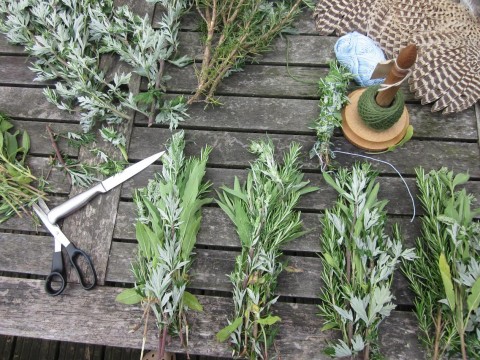 Smudging a house
Smudging a house
Choose a time where no one but family who live there are about for 24 hours then clean and tidy and generally have a good clear out, preparing a few bags to give away. Then put some good tunes on, light a candle in each room whilst asking for support from your guides and spirits. Light your smudge stick by pushing back some of the thread and holding a flame to the end. When it starts to take you can gently encourage it by blowing on the herbs til lovely embers forma and the stick starts to smoke. Start in the North top corner of the house and work through each corner nook and cranny, North, East ,South, West in each room saying a mantra as you go. Something like ‘clear the old vibes and make space for new energies’. Its nice to pay special attention to the doors saying ‘let all whom enter do so with peace in their hearts and exit with filled with love’.
Smudging a person
Start at their feet and gently blowing on the smudge stick or wafting it with a big feather or wing start to work up around the body spiraling as you go. Pay special attention to the womb or pelvic area, the heart, the third eye and the crown. Finishing here. Remember to whisper or chant a suitable mantra as you work.

